This post may contain affiliate links which may generate a small commission from clicks that result in a purchase.
Your olive tree not fruiting and doesn’t produce olives? There may be several reasons why your olive tree is not producing olive fruits such as an age of the olive tree, lack of sun or insufficient irrigation, lack of nutrients, too acid soil, lack of pollination, pruning, olive cycle, and others.
So your task is to identify the cause first. Here in this article, I will suggest a few possible causes for the olive tree not fruiting that may give you sufficient guidance.
If you don’t think any of the causes that I’ve listed apply to your olive trees, you can see a list of questions at the end of this blog that gives a bigger picture of possible problems and pinpoints what you should consider.
Age of Olive Tree
One possible cause of the non-fruiting could be the age of the olive tree. Many varieties of olive trees do not produce fruit until their third year.
Some other olive tree varieties (including, for example, the Arbequina olive tree) may start producing at a younger age. But the olive fruit that is produced in the early years is often smaller than the olive tree will produce as it matures. And in the early years, the olive fruit can also appear very rough and misshapen.
For instance, I have a Koroneiki cultivar olive tree growing in a large container that took four years after planting to start producing.
| Olive Tree Cultivar | Year to Bear Fruits |
|---|---|
| Koroneiki | Can bear olives in 1st year |
| Arbequina | Can bear olives in 1st year |
| Amfissa | 2-4 years |
| Leccino | 1-2 years |
| Frantoio | 2-4 years |
Lack of Sun or Insufficient Irrigation
Another possible cause of your olive tree non-fruiting could be a lack of sun or insufficient irrigation.
Olive trees perform best when it receives the sun for most of the day. Proper irrigation is also very important since olive trees prefer to be on a dry side comparing with moisture.
An under-watered olive tree will produce few if any olives. But it is also important not to overwater olive tree which can also cause problems.
In the attached short video we provide some very good guidance on how to water olive trees.
Ensure your olive trees are not water-stressed during the period of flower induction and fruit development. Since in drought conditions, leaf development is favored at the expense of flower development. Resulting in malfunctioning flowers that do not blossom correctly and prematurely drop without setting fruits.
Lack of Nutrients
Lack of soil fertility could also cause problems in producing olives. Olive trees do need to be fertilized especially in the fruiting phase.
Nutrients such as nitrogen, calcium, and boron are essential for optimal flowering and fruit sets. Feed your olive trees early in spring, avoid fertilizing in winter to avoid encouraging excessive vegetative growth during the dormant season and resulting in poor floral development.
Soil test or leaf analysis taken in spring or mid-summer will give a good understanding of the olive tree’s nutritional status and fertilizer requirements.
Also, check out our article with good information on how and when to fertilize olive trees with guidance on how much fertilizer to use (which depends on the age and size of the trees).
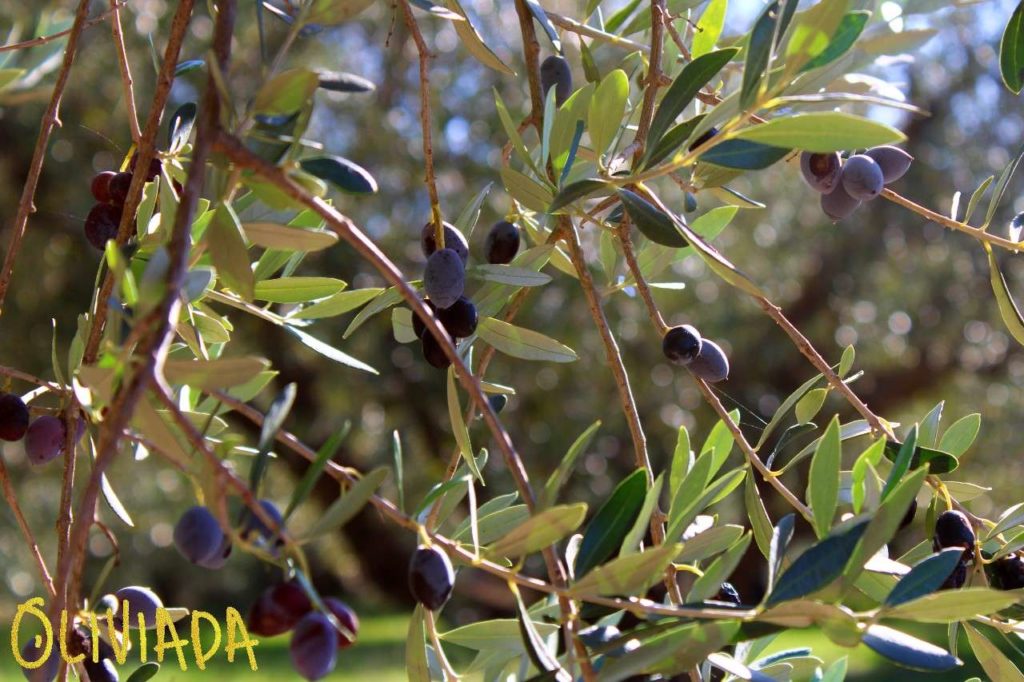
Too Acid Soil
If you have low fertility and very acidic soil, it may lack the nutrient calcium which is a very important nutrient to help olive trees to unlock other essential nutrients and vitamins. These vital elements are locked up in the soil due to the excessive nitrogen you have in such acidic soil.
In that case, you should get a soil amendment or fertilizer to acid soils that assists in increasing soil pH to a sustainable level for your olive trees. Whilst providing useful amounts of macroelements calcium, magnesium, silicon, and phosphorus as well as a range of micronutrients required for olive tree fertility, flowering, and fruiting.
Lack of Pollination
Another possible cause for nonproducing olive trees is a lack of pollination. It can be affected by the bloom time, pollen vitality, and weather conditions during the flowering period.
While many olive varieties are capable of producing olives without bees, wind, or other pollinizers visiting the flowers, a few varieties do require cross-pollination.
Based on research, if you introduce another compatible olive cultivar for your mono-varietal grove, the olive yield (fruit set) can be improved from 1% up to 4%.
For example, some Leccino and Mission cultivars require cross-pollination by another olive tree to produce fruit.
| Olive Tree Cultivars | Pollination |
|---|---|
| Koroneiki | Self-pollinating |
| Arbequina | Self-pollinating |
| Frantoio | Self-pollinating |
| Leccino | Cross-pollinating |
| Mission | Cross-pollinating |
| Manzanillo | Cross-pollinating |
Read more about self-pollinating and cross-pollinating olive trees including olive tree pollination chart:
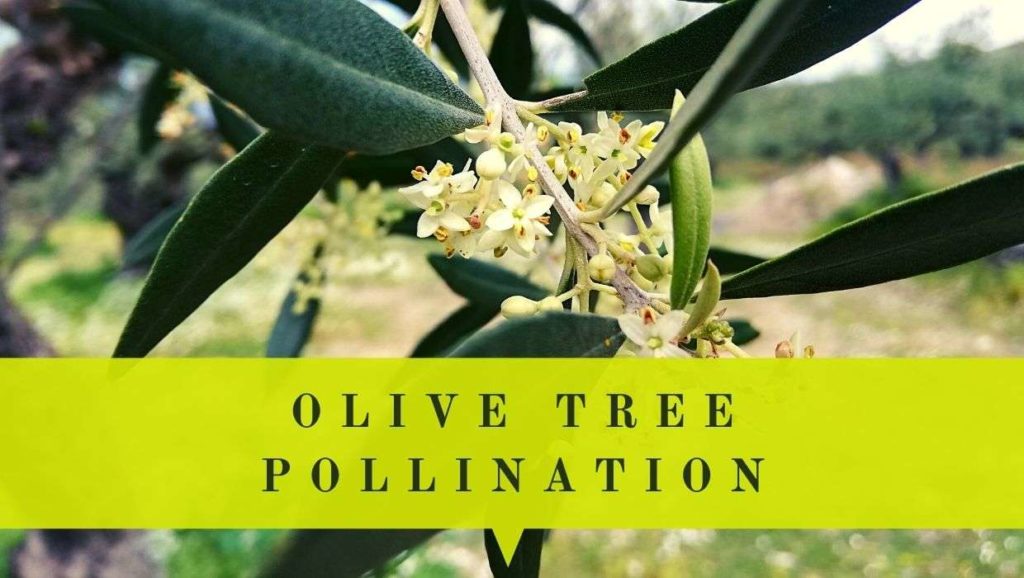
Olive Cycle
Finally, some olive trees will produce well only every other year, producing a good number of olives one year and only a few olives (or none at all) the next year.
So, if you’ve observed the olives trees for less than two full years, you may have seen them in their non-productive year.
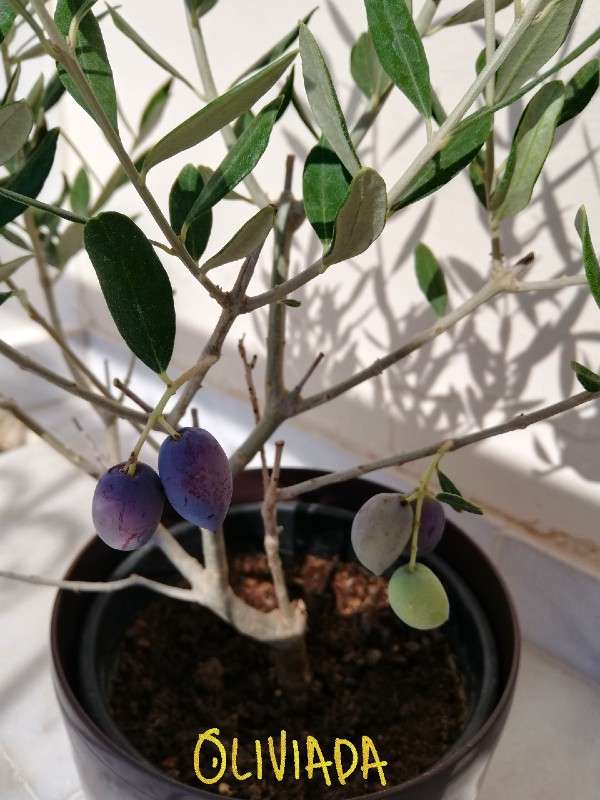
Pruning
If you are a beginner in olive tree growing, and if olive fruit yield has been poor in the previous season, prune your olive trees only when they are flowering. Don’t do it before spring. And only prune the branches that are unproductive so that you leave as many flowering branches as possible.
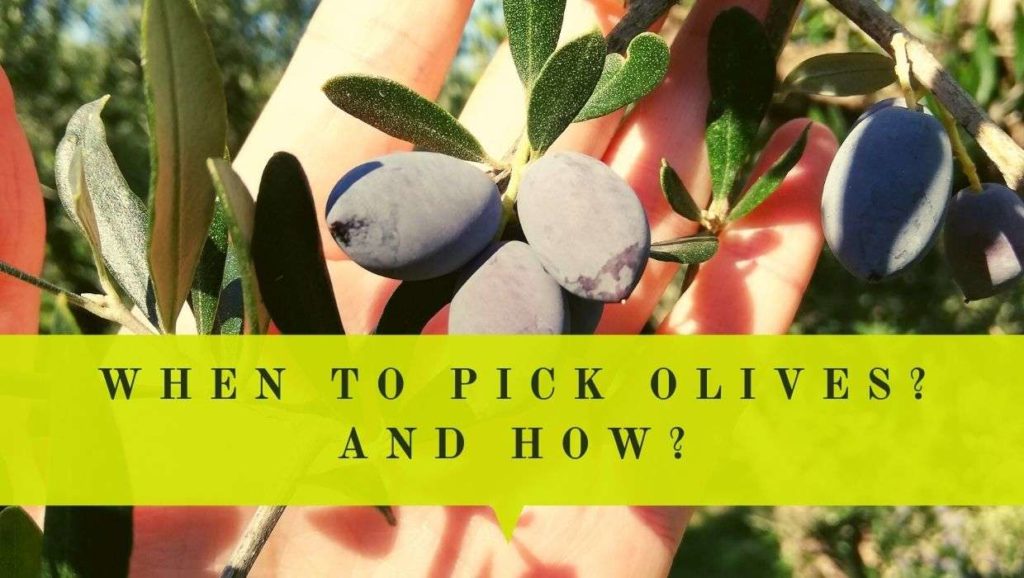
Generic FAQ on Olive Tree Fruiting
Checklist on why Olive Tree Not Fruiting
Hopefully with this information above you can determine what causes your olive tree to not producing and correct it. If not, here’s the type of information you should consider on your particular olive trees.
- Where do you grow your olive trees? Which City or part of the country?
- What olive tree varieties do you have?
- When did you plant your olive trees? What was the size of the olive tree when initially planted? What is the current size?
- How many hours of sunlight per day do the olive trees receive in the spring and summer months?
- How are the olive trees irrigated? How much water is provided and how often do you water?
- Are the olives trees planted in the ground or in containers?
- If the olive trees are in the ground, what type of soil do you have (for example, is it heavy clay or are you one of the lucky souls who have more loamy soil? If the trees are in pots or containers, what type of soil mixture was used to fill them?
- Is the area under the canopy of the trees covered with weed (which helps the soil retain moisture)?
- How have you been fertilizing the olive trees? (frequency, amount, and type of fertilizer used)
- Does the foliage on the olive tree look healthy? Are the leaves silver-green or are they yellowing?
- Any signs of insect damage on olive leaves, branches, or trunk? (for example, curly olive leaves, spots or holes in the leaves, sticky substances on the leaves which could be honeydew from insects, ants crawling in the olive tree)
- Do the olive trees have flowers in the springtime?
- If the olive trees have bloomed in past years, have you observed any bees or other pollinizers visiting the blossoms? Are there many bees or just a few?
I hope this information is helpful in finding a root cause and getting your olive trees in shape to produce.
If not, I encourage you to provide the additional information described above to the Olive Tree Growers and Enthusiasts Group on FACEBOOK including the pictures of your tree and your observation. In order that group members can focus more precisely on your particular problems and focus more closely on what is causing problems to your olive tree.
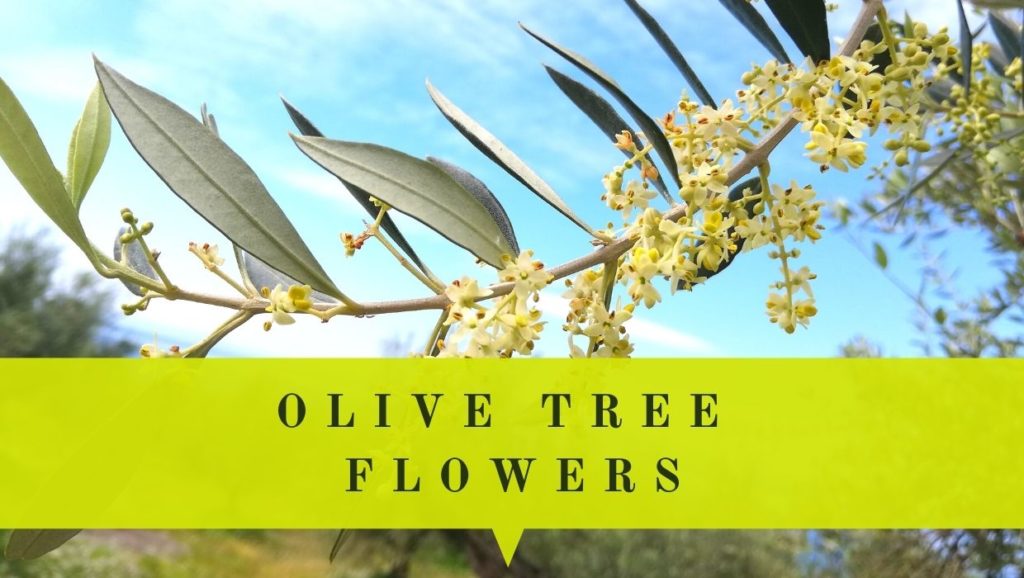
Read Next
HOW DO OLIVES GROW? ILLUSTRATED GUIDE
Learn More
- Self-pollinating & Cross-pollinating Olive Trees
- Olive Tree Not Growing & Producing Leaves? Try this
- How to Grow Olive Trees Indoors – 20 Facts
- 15 Greek Olive Tree Varieties for Oil
Hi, I’m Vangelis Kleftogiannis, the founder of Oliviada and an established olive oil expert from Kalamata, Greece. My expertise isn’t just in producing quality Extra Virgin Olive Oil, but also in the cultivation and care of olive trees themselves. I am deeply committed to sharing my knowledge and know-how, helping others understand the intricacies of olive tree growing and the creation of quality olive oil.
Are You Looking to Buy an Olive Tree?
If you are looking to add more potted trees or other plants to your orchard, or if you like to replace a neglected olive tree, the best places to get them are your local nursery or an online nursery.
One of the most reliable and the world's largest online nurseries is Fast Growing Trees. They deliver fast, neat, and healthy plants backed with a 30-day guarantee.

hello. 5 years ago I had a 30 year old olive tree planted in my garden which is irrigated when there is a dry spell. It has pride of place in the centre of a flower bed. I’ve read all your information etc and can’t imagine if I am doing something wrong but it has never even flowered let alone bear fruit.
Please could you help ! I am very fond of it and would love to see it happy and fruiting.
Thank you
from Gill
Hi Gill, first of all, do you know what variety is your olive tree? there are some varieties (or hybrids) fruitless and they barely fruit and never give fruits.. if there are perfect conditions to grow an olive tree but it never flowered in 5 years, I would assume it is fruitless.
I planted a kalamata tree 6 to 7 years ago in Central Florida. It was a single stick as big as your thumb and 4 foot tall planted. It is now 9 foot tall and about 6 foot wide. Very healthy looking and beautiful. I fertilize it every few months with a 20-10-10 blend. I water when we get no rain for a couple weeks. It is not planted in a damp area. I have not had even a single bloom on this tree. Any advice would be appreciated.
Hi Carl, have you ever pruned your tree? proper pruning helps to source nutrients and energy to produce fruits. Also, would be beneficial to test the soil at least once a year to ensure key nutrients are not missing. If it is not the case, I would suggest having a chat with a local arborist in order to identify the olive tree variety and other factors that may impact flowering.
hi, how can i find out what variety of olive tree i have, i purchased it as a small 18inch high and it is now over 6 foot high with a sturdy trunk and growing in the garden, it gets sun from early morning till around 3pm , it gets lots of flowers come on the tree as of now but the flowers fall soon after, i have seen small clusters of olives form in the past but then never really develop, i water it with tap or rain water if it has been very dry for a few days , which is not often in central uk!
i would like to find out its type if possible
Hello, I have a 8 years old tree, good looking. It blooms richly, but have a little fruits. I think that watering and fertilizing is OK.
What is the problem?
Hi Svetlin, if your olive tree blooms a lot, but bears few fruits, it may be an issue with a lack of pollination. Another compatible olive variety would be very helpful for pollination especially if your olive tree is not self-fertile and requires cross-pollination. Also, have you experienced any extreme weather recently? the extreme heat wave may damage olive flowers resulting in low fruit production.
Hi Elaine, there are several hundreds of olive varieties in the world. it is very difficult to identify the olive cultivar based on the physical appearance of olive fruit and leaves. It can be done but the results won’t be 100% sure. The scientific way is to make a DNA analysis and characterise olive variety at a molecular, morphological, and physiological level.
I have an alberquina olive tree about 10 ft. Tall and healthy about 10 years old but has never flowered or produce fruit have enough water enough sun lite
Hi Gonzalo, where exactly are you based? The reason I am asking is that the olive tree needs a dormant season in order to flower and fruit. It should be a cool, dry winter for at least for 2 months with temperatures lower than 10C or 50F.
I was given an olive tree (2 yr old) 20 years ago by a friend with an olive orchard, so assuming they are the fruiting variety. After not flowering for 5 years I bought another in the hope of helping pollination. Both are growing well but neither has produced any flowers let alone fruit. Being on the Sunshine Coast (Australia) there is no problem with sun nor water.
Hi Wade, what is the situation with winter cold on the Sunshine Coast? Olive trees need to be dormant over winter, meaning the temperature must drop below 10C for some period. Otherwise, they won’t develop flower buds and wont fruit.
Hello. We had planted three different varieties(Coratina, Sevillano, and Frantoio) of olive in 2004 with a drip irrigation system in Pakistan. In 2009 only one time these plants produce fruits and after that till now they are fruitless. Can you please suggest to us what should we do?
Regards
Nowsherwan Zarif
Hi Nowsherwan Zarif, there are many reasons why olive trees are not fruiting such as frost damage, over-fertilization, pesticide products, poor pollination, inadequate sun exposure, and more. You should try to find a root cause initially and then apply the treatment. I suggest starting with soil testing in order to understand if it is overfertilized or which nutrients are missing. For example, over-fertilization and over-pruning may cause improper olive tree vigor, where all the energy focuses on growing wood and does not produce flower buds. What about the late frosts in your region? Frost damage will cause pollination issues and prevent olive fruit formation. If you have checked all these items and have no idea what is the issue, another great option is to contact your local arborist who can provide professional tree services and investigate the causes.
Thank you very much, Vangelis, for your valuable comments. Basically, I am working at the Pakistan Forest Institute, Peshawar. Our Institute planted this small olive orchard with drip irrigation in 2004. After 10 years, the drip irrigation was stopped, and now it is at the mercy of nature. The place where we have planted is Peshawar, Khyber Pakhtunkhwa, where summer is quite hot and winter is cold with frost. Now the question arises that if it is due to frost, then why do these plants fruit only once? Furthermore, I also came to know that these plants came under the attack of woolly aphids but it was got under control. Another thing I wanted to ask. Do we need to prune these olive plants because I believe that they have not been pruned ever since they were planted?
With best regards
Hi Nowsherwan, yes, proper pruning is mandatory for healthy tree growth and olive fruit production. Also, the olive tree normally bears fruits on previous years’ new growths, so if you don’t prune branches at all, the tree is not focusing its energy on new growths and fruit production only but trying to sustain all the branches. In terms of growing olive trees for fruit production in your area, are there any other local growers or professionals around who could share the know-how of their olive trees maintenance routine: fertilizing, watering, soil requirements. I have big concern olive trees can grow successfully in areas with cold and frosty winters, the ideal climate is the Mediterranean type: hot long summers and mild dry winters.
What is proper method for pruning?
Hi Mike, we have separate articles: how to prune olive trees in pots and shaping olive trees. please check they have valuable info for olive tree growers, especially for beginners. Hope it helps
Hello Vangelis…
I have two olive trees ( a Leccino, and a Castlevetrano ) that were 1 gallon sticks when planted in September of 2017.
They fruited in 2019 and were trimmed quite severely in 2020.
Since then they have not produced flowers of fruit.
What should I expect?
Also….I have 2 mission olives that were grown from clippings, and have grown well (about 5 years old) have shown small flowers for two years but no fruit.
Primarily I am concerned with the first two… the Leccino and the Castlevetrano.
Thanks in advance!!!
Sandy
Hi Sandy, unfortunately, there may be various reasons why your olive trees are not flowering. If olive trees do not flower, look at the location of the tree, weather conditions, irrigation, and fertilization practices and the care it receives. You should assess each of them. Example olive trees require full sun, need a cool dry winter season, and regular fertilization in order to produce flowers and fruits. Moreover, if olive trees are producing flowers but no fruits are possible that olive flowers are not getting pollinated and cross-pollination is required.
It seems my request above confirms that my original question never actually posted as I didnt see it above like I do now. My question was I have 3yr old trees, 9 of them, various types including Ascolana (3), Piccoline, Manzanilla, Koroneiki, Frantoio, Leccino and Pendolino…This year, only one Ascolana, my Koroneiki and Piccoline showed any fruit. Had probably 30-50 buds in spring and Ive just noticed that most if not all fruit died back after it only grew to a few millimeters in size. The trees are very much alive and thriving, but fruit is not advancing. We live in NorCal at 2600ft and get no natural rain from April thru October. I water on a drip every 3 days but have recently cut back to weekly in case I was over watering. Your thoughts are appreciated. Robb
Hi Robb, sorry I have missed your earlier comment. You have a great collection of olive trees! Some reasons for not fruiting might be poor cultivation, lack of nutrients, insufficient watering, and bad rootstock. For the next year try to improve the characteristics of the soil by testing, irrigating, and fertilizing. Ensure correct pruning to enhance fruit production. Olive trees respond the best to soil textures with balanced proportions of sand, silt, and clay. It is important to stimulate the growth of the tree with nitrogen focus fertilizer in order to support the olive quickly to flowering and fruiting. Olive trees are most sensitive to water stress during the flowering phase (from bud to flowering) so make sure they are watered very well. Fingers crossed next year will be more fruity after you upgrade soil and watering practice.
Hi I have an olive tree that is about 16 years old. Always had tiny fruit. About 4 years ago I got about 20/25 smallish olives that I could even consider for brining, lots of very small and tinny olives still on the tree. I get olives each year but they just dont get big? I changed to pot, I trim my tree and feed. Loads of spring flowers, fruit sets, but then just odd ones grow a bit bigger. It looks fab but come on at 16 years old? it should be olive haven at my house. I have it outside and even protect it from the elements each year. What Im I doing wrong that it treats me with so much disrespect, after all the love and attention I give her.
HI Gwendoine, cross-pollination could help you to increase olive yield. More about it check out my article “self-pollinating and cross-pollinating olive trees“. Regular watering is important too, especially during the olive fruit set phase. Also, do you know the olive variety you have? Your olive tree may have small olives in general, olive size can vary from 1 cm to 5 cm in size depending on its cultivar.
I planted a 6ft olive tree 14 months ago grew to12ft no flowers or fruit why also planted at same time was 1ft high grew to 6ft in 14 months same no flowers or fruit I live in cent fla
Hello John,
Your trees’ growth spurt might actually hint at why you haven’t seen flowers or fruits yet. Sometimes, when olive trees put a lot of energy into vegetative growth (meaning leaves and branches), they might delay reproductive growth (flowers and fruits). It’s like they’re focusing on growing tall and strong first.
Another consideration is the tree’s age. While you’ve seen substantial growth in height, olive trees often need a bit more time, typically around 3-5 years, before they start bearing fruit. Sometimes, they just need to mature a bit more before they’re ready to fruit.
Also, while olive trees can tolerate a range of climatic conditions, they have a specific requirement for cold hours to induce flowering. Central Florida might not be offering enough cold exposure for them.
Lastly, while it’s not always required, having more than one variety can aid in cross-pollination, which might enhance fruiting chances.
As your trees continue to mature, consider monitoring their nutrition too. Too much nitrogen can promote leafy growth at the expense of flowering. A balanced fertilizer can support both growth and flowering.
Don’t lose heart. With time, patience, and the right care, you may very well see your trees bursting into bloom and yielding those coveted olives. Keep nurturing them!
Hi Vangelis, I planted an Arbequina tree about 10 years in our backyard which gets about 8 hours of sun. The tree has grown to 15+ feet and looks very healthy. However, all these years, it hasn’t produced any flowers or fruits. I live in South Florida (zone 10B) where we get mild winters (mid Dec – mid Feb) when temperature at night go below 50F most of the time. We get long, hot and humid summers. I’m beginning to realize this is unfortunately a fruitless tree. The nursery that sold me the tree have many olive trees that bear fruit but is located in North Florida where the winters are cooler and longer. What do you think is causing this?
Hello! It’s great that your Arbequina tree has grown well, but it’s concerning that it hasn’t produced any flowers or fruits despite being 10 years old. Several factors could contribute to this issue:
Chill Hours: Olive trees, including Arbequina, generally need a certain number of chill hours during winter to set fruit. While South Florida has mild winters, it might be worth checking if your location meets the chill hour requirements for Arbequina.
Pollination: Olive trees are usually self-pollinating, but some varieties may benefit from cross-pollination. However, given the size of your tree, it’s less likely to be a pollination issue.
Pruning: Over-pruning can sometimes delay fruiting. Ensure that you are not excessively pruning the tree, especially during the growing season.
Nutrient Levels: Check the soil nutrient levels, especially nitrogen, as excessive nitrogen can encourage vegetative growth at the expense of fruiting.
Watering: Olive trees prefer well-drained soil. Excessive watering or poorly draining soil can adversely affect fruiting.
Pests and Diseases: Check for any signs of pests or diseases that might be affecting the tree’s ability to produce fruit.
Given the long, hot, and humid summers in South Florida, it’s worth consulting with local horticulturists or agricultural extension services. They can provide specific advice based on the local climate and conditions. It might also be helpful to compare notes with other local gardeners who have successfully grown fruiting olive trees in similar conditions.
I hope your Arbequina starts producing fruit soon! 🌳🫒